The 50 Best Fantasy Books of the 21st Century (So Far)
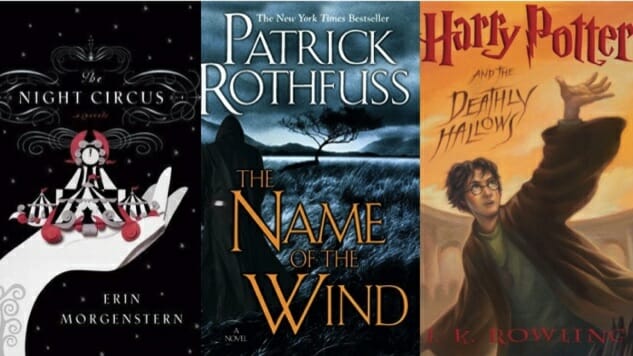
While fantastical stories have been around since before the written word, they’ve gone in and out of fashion throughout history. But the 21st century has been a particularly fruitful time of fantasy literature, with J.K. Rowling’s Harry Potter series ushering in an era of both publishers willing to take a chance on new fantasy writers and readers opening themselves up to worlds of magic. Many readers have worked their way back from movies like the Lord of the Rings franchise or TV series like Game of Thrones to their fantasy novel origins, seeking out new authors after devouring J.R.R. Tolkien and G.R.R. Martin’s books.
If you’re looking for your new, favorite fantasy saga, we’ve got you covered. We’ve gathered Paste editors and writers to compile a list of our favorite books in the genre, ranging from high fantasy worlds with distinct systems of magic to simple fantastical fables to urban fantasies filled with characters ripped right out of own realities.
This list boasts everything from Young Adult novels brimming with magic and violence to high fantasy epics chronicling war and drama. We’ve limited our picks to two books per author, and these books include entries in multi-volume series, standalone novels and a collection of short stories. Nearly 150 titles received at least one vote, but we’ve narrowed it down 50 books we recommend without reservation.
Here are the 50 best fantasy books of the 21st Century:
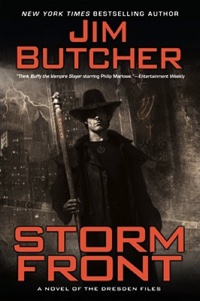 50. Storm Front by Jim Butcher (2000)
50. Storm Front by Jim Butcher (2000)
Jim Butcher layers fantasy elements on top of hardboiled mysteries, following magician-for-hire and Chicago P.D. consultant Harry Dresden—more Philip Marlowe than Albus Dumbledore. In the debut entry of the Dresden Files, 2000’s Storm Front, our gum-shoe wizard must solve a series of murders to avoid having the blame pinned on him—or becoming the next victim—all while trying to overturn his bad luck with women and his inability to pay his bills. It’s a gritty, pulpy, fun genre-romp that spans 15 books in 15 years. —Josh Jackson
![]()
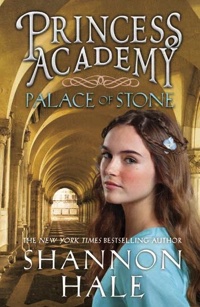 49. Princess Academy by Shannon Hale (2005)
49. Princess Academy by Shannon Hale (2005)
Before Tiana found success through her keen, hard-won business skills, before Merida saved her kingdom through shrewd diplomacy rather than marriage, before Anna and Elsa made the idea of a prince an afterthought by saving each other with sisterly love—and before Anna found her own magical talking rocks—there was Shannon Hale’s not-princess Miri, who earned a Newbery Honor with her use of business acumen, diplomatic finesse, and magical-rock-talking to unite the quarry girls of Mount Eskel’s village first in an existential battle against the strict courtly tutelage of Tutor Olana, and then in a battle for their lives against their wintertime entrapment by mountain bandits. Sure, it’s called Princess Academy, and sure, it promises a cut-throat girl fight for the hand of a prince, but don’t play yourself by writing this diamond of a story off on the assumption that neither of those things might make for a compelling, multi-dimensional framework for a fantastic, fantastical story of human ingenuity and resilience. Miri will steal your heart. —Alexis Gunderson
![]()
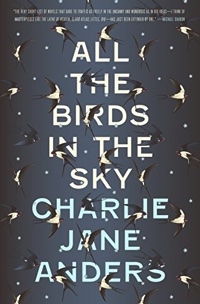 48. All the Birds in the Sky by Charlie Jane Anders (2016)
48. All the Birds in the Sky by Charlie Jane Anders (2016)
Magic collides with science, sometimes violently, in Charlie Jane Anders’ highly imaginative hybrid of sci-fi and fantasy (They’re not combined or conflated; there are two different strands, one in each camp). Two social outcasts, a budding witch and a boy who’ll grow up to be a tech genius, meet in school, become friends, drift apart, and ultimately have to team up to save the world. Also, cats talk. There is a certain unevenness in tone; it wavers between absurd and dead-serious, between allegorical and dramatic, that might confuse some readers, and the middle section sags a little. But the sheer exuberance of language and unfettered whimsy of the concept are more than enough to make up for that. This book is a celebration of ambiguity, and one that transcends “genre fiction” with its luminous prose and inventive hybridizing of two distinct genres. It has its imperfections but it’s a delight to read: Quirky, nerdy-but-hip, eccentric and deeply intelligent, All the Birds in the Sky is a book that, like its author, resists being categorized and is the stronger for it. Not necessarily a book for immovable sci-fi or fantasy purists but an essential one for people who like it when intelligent writers refuse to bow to conventions and create their own. —Amy Glynn
![]()
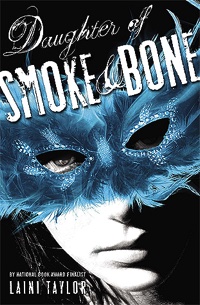 47. Daughter of Smoke & Bone by Laini Taylor (2011)
47. Daughter of Smoke & Bone by Laini Taylor (2011)
There is a whole lot to praise in Laini Taylor’s Daughter of Smoke & Bone, from the richness of the various settings to the startling novelty of the premise to the sleight of hand with which she will make you look at hands and teeth and hair and puppets and goulash with entirely new eyes, but the top thing you are likely to take away from this reading experience is: God, what gorgeous prose. Laini Taylor is a mad sorceress of words in everything she writes, but this epic, mysterious, multi-generational fantasy battle between star-crossed lovers, sprawling between Prague’s cobbled streets and an equally rich (if war-torn) parallel realm is the perfect stage for her skills. Until the very last chapter reveals the secret to Karou’s past and sets up the wildly different story (and setting) of the trilogy’s remaining books, it is also a remarkably strong standalone read. Although, good luck trying to stop yourself from devouring all of Karou’s story, and Taylor’s words, once you’ve started. —Alexis Gunderson
![]()
 46. The Abyss Surrounds Us by Emily Skrutskie (2016)
46. The Abyss Surrounds Us by Emily Skrutskie (2016)
An exciting LGBTQ+ novel that blends elements of sci-fi and fantasy, The Abyss Surrounds Us takes place in a world where a teen girl’s family raises monstrous beasts that defend ships from pirates. Like, Pacific Rim-sized monsters. Unfortunately for our young protagonist, she’s captured by pirates on her first mission and is forced to raise a monster for them. You’ll devour this novel and its 2017 follow-up The Edge of the Abyss. —Eric Smith
![]()
 45. Uprooted by Naomi Novik (2015)
45. Uprooted by Naomi Novik (2015)
Witnessing the blossoming confidence of Agnieszka is a big part of the joy of Naomi Novik’s quiet, lyrical fantasy novel Uprooted, more interested in its few characters than building a complex fantasy world. A feared wizard who isn’t what he seems, a corrupted forest ruled by an ancient evil Wood Queen and a charming protagonist made this 2015 stand-alone novel a Nebula Award winner that inspired a bidding war for its movie rights. (Warner Bros. won and hired Ellen DeGeneres to produce.) —Josh Jackson
![]()
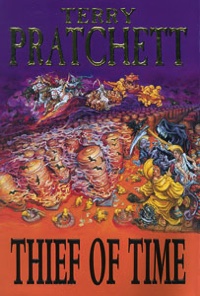 44. Thief of Time by Terry Pratchett (2002)
44. Thief of Time by Terry Pratchett (2002)
The Discworld books manage to satirize nearly every topic under the sun while also presenting a fully formed and innovative fantasy world à la Middle Earth or Westeros. There were always jokes, but Pratchett was an even better storyteller than he was a satirist. In Thief of Time, time is something manufactured by the Monks of History. They allocate it as they see fit until some upstart gets it into his mind that time should just be stopped dead in its tracks. There’s even more room for philosophical inquiry here than elsewhere within the series. —Mack Hayden
![]()
 43. The Girl Who Circumnavigated Fairyland in a Ship of Her Own Making by Catherynne M. Valente (2009)
43. The Girl Who Circumnavigated Fairyland in a Ship of Her Own Making by Catherynne M. Valente (2009)
Catherynne Valente is a legend in off-kilter, indie fantasy, but while her standalones for adults are terrific, it is her young adult Fairyland series that most people probably know her for—and deservedly so. Following the very first through-the-portal Fairyland adventures of the too-smart-by-half pre-teen September and her new best Wyverary friend, A-through-L, The Girl Who Circumnavigated Fairyland in a Ship of Her Own Making is an achingly true meditation on the confusing, exciting pain of growing up, all wrapped up in pure cleverness and whimsy. And while the plot may at times feel too lullingly gentle, the characters and settings are so thoroughly, gorgeously drawn, and each sentence so meticulously, luminously crafted, that a discerning reader is unlikely to get bored. Adults will find a thousand things to love in this world, but a voracious book-loving kid, for whom this series will feel like a gift from the Universe, will find one billion and four. Do yourself a favor, and share September’s Fairyland growing pains with every kid you love. —Alexis Gunderson
![]()
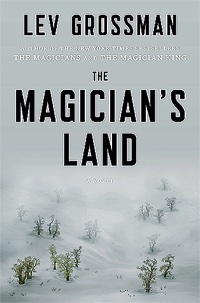 42. The Magician’s Land by Lev Grossman (2014)
42. The Magician’s Land by Lev Grossman (2014)
While the shorthand description for Lev Grossman’s Magicians trilogy was “Harry Potter for grown-ups,” that ignored two facts: 1. Harry Potter was already for grown-ups. 2. Despite its magical school setting, the series owed more to the wonder of C.S. Lewis’ Narnia series than to J.K. Rowling’s books. There’s plenty of college-age angst in the first entry, but as the focus shifts from Brakebills College for Magical Pedagogy to the fantastical world of Fillory, captured in a set of children’s books that have long fascinated young protagonist Quentin Coldwater, Lev Grossman opens up his heart. Each book cares a little more deeply about its characters—who face the same struggles for meaning and purpose that the rest of us do—culminating in 2014’s The Magician’s Land. Magic corrupts as much as it helps pull its practitioners out of their melancholic existences. The nostalgia for the stories of Fillory can’t hide the darkness at its heart. The loss of that innocence—getting expelled from his own fantastical Garden of Eden—sends Quentin spiraling out of control in a convoluted sequence of events that end up weaving together in unexpected ways. The SyFy TV series based on these books is a fun, at-times sharply written spin on Grossman’s characters, basic plot points and broad themes, but it misses the density and complexity of the modern human struggle found in this trilogy. —Josh Jackson
![]()
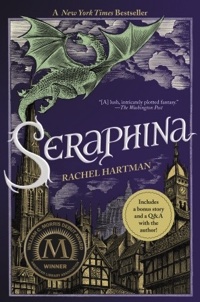 41. Seraphina by Rachel Hartman (2012)
41. Seraphina by Rachel Hartman (2012)
“The right note played tentatively still misses its mark, but play boldly and no one will question you,” says the 16-year-old, half-dragon Seraphina. “If one believes there is truth in art—and I do—then it’s troubling how similar the skill of performing is to lying. Maybe lying is itself a kind of art. I think about that more than I should.” Dragons are a mainstay of fantasy as a genre, but rarely as complex, thinking beings integral to a story’s interpersonal dramas, which is how Rachel Hartman frames her coolly calculating shape-shifting dragons in Seraphina and its companion books. Everything about Seraphina’s world is novel and compelling, but while the dragon-human political dramas and various terrestrial and airborne battles are exhilarating, it is the central importance of art and music in dragon-human relations publicly, and in Seraphina’s constant tension of self privately, that will keep you unable to stop thinking about what it means to be human, and what we owe to each other, long after you’ve finished the series. —Alexis Gunderson
![]()
 40. Leviathan by Scott Westerfeld (2009)
40. Leviathan by Scott Westerfeld (2009)
Scott Westerfield’s alternate history, dystopian steam-punk trilogy is also full of fantastical beasts, which is enough to qualify it for this list. But it’s his imaginative re-telling of World War I from the perspectives of the young heir to the Austro-Hungarian empire and a girl pretending to be a boy in the British Air Service that makes it worthy of a spot. The Clankers (Germans and other Central Powers) rely on steam-powered robots and futuristic machines to battle the fabricated animals Darwinists (the UK, France, Russia and their allies) employ as weapons in the war. Written for young adults, Leviathan and its sequels Behemoth and Goliath are entertaining for all ages. —Josh Jackson
![]()
 39. Egg & Spoon by Gregory Maguire (2014)
39. Egg & Spoon by Gregory Maguire (2014)
The overlap of readers who would count both Diana Wynne Jones and Nikolai Vasilievich Gogol in their top ten might be slim, but for those who fall within it, Gregory Maguire’s Egg & Spoon, a Jonesian-Gogolian romp through Russian folklore that comes as close as anything to proving that Heaven is real and all of humanity’s greatest geniuses are up there spending their eternities in the most fantastic of creative collaborations and then whispering them down through Earthly vessels for our collective enjoyment, is nothing more than the physical manifestation of the wildest dream you never knew you had. For everyone not in that vanishingly small overlap of Jones & Gogol obsessives—that is, most readers—Egg & Spoon’s dip into the Baba Yaga-centered mythology of the old pagan Rus is still a joyously weird fabergé egg of a romp, opening a window onto a folk tradition too infrequently explored in English-language fantasy, and doing so in a way that reflects the nihilistically wry voice and passionately melancholic soul of the Russian literary tradition with almost shocking accuracy. —Alexis Gunderson
![]()
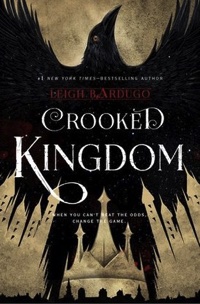 38. Crooked Kingdom by Leigh Bardugo (2016)
38. Crooked Kingdom by Leigh Bardugo (2016)
Six of Crows, the first book in Bardugo’s duology, often gets compared to a fantasy version of Ocean’s Eleven and follows a band of teenagers executing a heist. And if Six of Crows is the heist, then Crooked Kingdom is the glorious getaway drive. Want to read about a grand scheme, involving magic, fighting, and all the joys of fantasy? These books are for you. And one of the truly great things about this duology is that if you haven’t read the previous books (The Grisha Trilogy) that take place in Bardugo’s fantastical world, you can still dive in. —Eric Smith
![]()
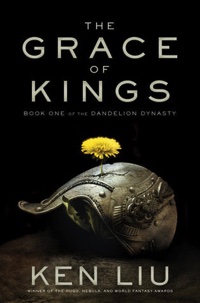 37. Grace of Kings by Ken Liu
37. Grace of Kings by Ken Liu
Game of Thrones comparisons abound in epic fantasy, and are often more burden than boon, but Ken Liu’s Grace of Kings may be one of the few fantasy tomes to earn that comparison favorably. The first volume in The Dandelion Dynasty series, Grace of Kings follows the diminutive Kuni Garu, a charming bandit, and the towering Mata Zyndu, the resolute son of a deposed family lineage, as they suffer under—and eventually help topple—a tyrannical ruler. But what sounds like a spoiler is really the prelude to Liu’s true plot, as these two find themselves with opposing views on how to establish justice in this new world. Liu, who also translated the first volume of the wildly popular Chinese sci-fi novel The Three-Body Problem, draws from Asian inspirations but creates a fantasy world that feels wholly original, not like an amalgamation of existing cultures. The Wall of Storms, Liu’s follow-up, masterfully builds on the seeds planted in the first volume, and readers would be wise to catch up now before the impending trilogy conclusion. —Steve Foxe
![]()
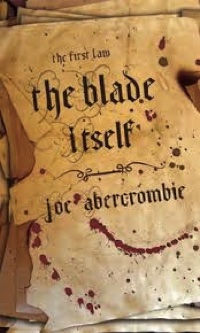 36. The Blade Itself by Joe Abercrombie (2006)
36. The Blade Itself by Joe Abercrombie (2006)
“The blade itself incites to deeds of violence,” Homer wrote in The Odyssey. And while Logen Ninefingers would be unlikely to read Homer, even if there was a Homer in his rugged land of the North, he’d probably agree with that sentiment. The “Bloody-Nine” can’t seem to escape the violence of his life, even after joining up with the much more civilized Bayaz, the First of the Magi. Joe Abercrombie’s fantasy world may feel like an amalgamation of places you’ve visited in your reading before, but the characters feel fully realized and the storytelling is taut, avoiding an over-reliance on fantasy trappings and delivering a gritty, gripping tale. —Josh Jackson
![]()
 35. The Winner’s Kiss by Marie Rutkoski (2016)
35. The Winner’s Kiss by Marie Rutkoski (2016)
Rutkoski’s The Winner’s Kiss makes us say goodbye to a beloved YA fantasy series, The Winner’s Trilogy. I’ll avoid spoilers for those of you who haven’t dug into the series, but Rutkoski’s lush fantasy romance is set in a world of politics, war, and scheming. It’s also a story of forbidden love between the privileged daughter of a general and a teen from a class of people her father has conquered. From the music to the balls to the swoon-filled romances, this is a gorgeous series the YA community is sad to see go. But we can’t wait to see what Rutkoski writes next. —Eric Smith
![]()
 34. A Dance with Dragons by George R.R. Martin (2011)
34. A Dance with Dragons by George R.R. Martin (2011)
If A Feast for Crows is when A Song of Ice and Fire sprawled to almost unmanageable proportions for one author, causing George R.R. Martin to split the book geographically in two, A Dance with Dragons was the beneficiary of the more interesting story lines. Devoid of the goings-on in Dorne, the Iron Islands and the Vale, the fifth novel features Tyrion’s adventures in the Free Cities, Daenerys’ struggles to control her city or her dragons, and Cersei’s walk of shame. It took 11 years for Martin to publish the pair of books that span a single timeline. So it shouldn’t be too big of a surprise that we’re still waiting on the sixth installment in 2018. —Josh Jackson
![]()
 33. A Torch Against the Night by Sabaa Tahir (2016)
33. A Torch Against the Night by Sabaa Tahir (2016)
The gripping sequel to An Ember in the Ashes, Sabaa Tahir’s A Torch Against the Night expands a chilling, magical world modeled after ancient Rome. Book Two avoids the sophomore slump, prioritizing character development and increasingly insane stakes to keep your adrenaline pumping. And Tahir continues to tackle serious topics like slavery and government corruption with strength, proving that compelling fantasy stories exploring real-world issues are not only entertaining but essential when done right. —Frannie Jackson
![]()
 32. The Strange and Beautiful Sorrows of Ava Lavender by Leslye Walton (2014)
32. The Strange and Beautiful Sorrows of Ava Lavender by Leslye Walton (2014)
Not to fall prey to hyperbole, but The Strange and Beautiful Sorrows of Ava Lavender is nothing less than a tightly-written, Pacific Northwest cousin to 100 Years of Solitude. While it is marketed as Young Adult, the book’s shifting narrators—in the introduction, a venerable Ava telling “her” story, starting with her great-grandfather and the reasons he moved his family from France to Manhattan; next, the story of Ava’s grandmother (and her siblings) and their move out west; next, the story of Ava’s mother (and her loves) and their life in Seattle; and finally, only in the last quarter of the book, the harrowing story of Ava’s own, angel-winged teenage experience—make it clear that this is a story not of one teen, but of a whole, magically cursed line of Lavender women. The harrowing climax is frustratingly predictable, but the beautiful, strange journey here is what matters. —Alexis Gunderson
![]()
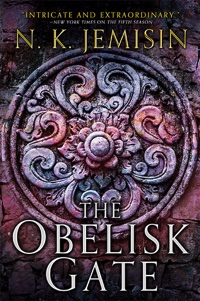 31. The Obelisk Gate by N.K. Jemisin (2016)
31. The Obelisk Gate by N.K. Jemisin (2016)
The Hugo Award-winning second book in N.K. Jemisin’s Broken Earth Trilogy proves that sequels can be just as mesmerizing when done right. The Obelisk Gate boasts everything that made The Fifth Season phenomenal—a brilliant magic system, three-dimensional female characters, world-ending stakes—and ratchets it up to 11. Jemisin consistently pairs fascinating character development with intense action, continuing a fantasy epic that demands your undivided attention. —Frannie Jackson
![]()
 30. Lirael by Garth Nix (2015)
30. Lirael by Garth Nix (2015)
When Sabriel came out in 1995 and, through Sabriel’s bell-wielding “Chosen One” Abhorsen, introduced readers to a wholly novel, deeply humanist, alarmingly weaponized way to imagine necromancy, it was clear that a modern classic had been born. What was not clear, at least until Nix returned six years later with a legacy-building sequel following Sabriel’s yet-undiscovered half-sister through her failed training as a Clayr and discovery of her own necromantic powers, was that the world of the Abhorsens had so many more quietly harrowing stories to tell. Thankfully, Lirael and all her messy, anxious necromantic/remembrancer powers did appear, and with them, all the elements needed to keep a great fantasy epic ticking indefinitely. —Alexis Gunderson
![]()
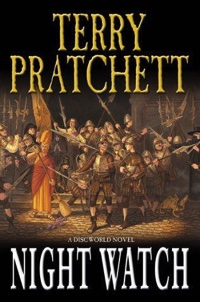 29. Night Watch by Terry Pratchett (2002)
29. Night Watch by Terry Pratchett (2002)
One could be forgiven for having a hard time making heads or tales of Terry Pratchett’s sprawling Discworld series, looking from the outside in. The master satirist/fantasist’s ever-growing stable of characters can be profoundly complicated and variable in terms of how interesting they genuinely are, but most fantasy fans would agree that the entries focusing on the city of Ankh-Morpork’s City Watch are among the strongest and most rewarding. In particular, the journey of Watch captain Samuel Vimes is perhaps Pratchett’s best overall character arc, which is one of the reasons that Night Watch is such a joy—it takes a character we already know and love and then deepens his history in ways the reader wouldn’t have thought possible. By dipping a toe into what is essentially a science fiction premise and thrusting Vimes back through time (and into contact with an earlier version of himself), Pratchett mines the unreliability of his own character’s previous narration when alluding to the past. As in the best of Pratchett’s work, numerous threads weave together into a madcap crescendo of a conclusion, resetting things back to more or less the way they were—with some subtle changes that will continue to pay dividends in future novels. This was always one of Pratchett’s greatest strengths—even while crafting a satisfying stand-alone story, he was constantly thinking about how his actions could ripple effect into additional tales down the line. —Jim Vorel
![]()
 28. Tuesdays at the Castle by Jessica Day George (2011)
28. Tuesdays at the Castle by Jessica Day George (2011)
In her lovely Middle Grade Castle Glower series, which kicks off with Tuesdays at the Castle and concludes five books later with Saturdays at Sea, Jessica Day George has managed to bottle pure, concentrated charm. The series’ heroine is Celie, youngest daughter of King and Queen Glower, who has made it her mission to finally map out an official, exhaustive compendium of their magically-shifting castle’s many different floor plans, secret rooms, and hidden amenities. What starts out as an inquisitive kid’s adventure through fantastical, sentient architecture turns into a portal fantasy hinging on ancient, inter-realm political drama and the endangered status a woefully underutilised (surprise) mythical creature. While the whole, breezily short series is worth your while, Tuesdays at the Castle is a satisfying gem of a standalone book, a modern classic that belongs on everyone’s shelf right next to Howl’s Moving Castle. —Alexis Gunderson
![]()
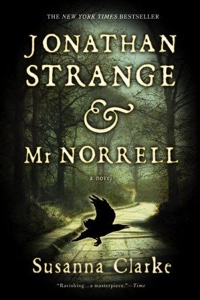 27. Jonathan Strange & Mr. Norrell by Susanna Clarke (2004)
27. Jonathan Strange & Mr. Norrell by Susanna Clarke (2004)
Susanna Clarke’s debut historical fantasy imagines a 19th-century world in which a pair of practical magicians revive the tradition of English magic. Jonathan Strange serves as apprentice to Mr. Gilbert Norrell, but the two men couldn’t be more different in temperament or their views of magic, particularly the role of the Raven King. As their rivalry intensifies, so do the dangers of the fairy world they’ve tapped into. The 782-page novel includes copious footnotes following one rabbit hole after the next. It’s a distinctly English work, recalling Jane Austen as much as J.R.R. Tolkein and offering a world of moral complexity, never shying from the darkness of men’s souls. —Josh Jackson
![]()
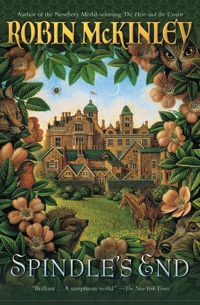 26. Spindle’s End by Robin McKinley (2000)
26. Spindle’s End by Robin McKinley (2000)
Robin McKinley takes on a dated fairytale—Sleeping Beauty—and transforms it into a magical novel that gives the Princess agency. Though Rosie grows up in the shadow of a curse, she proves to be a fierce, courageous and spirited woman who seeks to save herself and her kingdom. Beyond Rosie, Spindle’s End is packed with even more three-dimensional female characters who consistently defy damsel-in-distress tropes. This captivating tale delivers a refreshing adventure, revealing that female friendships and high-stakes action belong together in fantasy. —Frannie Jackson
![]()
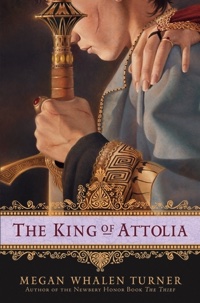 25. The King of Attolia by Megan Whalen Turner (2006)
25. The King of Attolia by Megan Whalen Turner (2006)
Megan Whalen Turner’s conniving hero-thief, Eugenides, may have first pulled the rug out from under YA Fantasy readers in 1996’s The Thief, but his unreliably narrated adventures didn’t end there. Moving away from Gen’s perspective in the 2000 sequel, The Queen of Attolia, Turner gave his already bamboozled fans more twists and turns to trip over, but it was in the Queen’s Thief series’ third installment, 2006’s The King of Attolia—in which she removes the reader even more thoroughly from the heads of Gen and Attolia—that it became clear how clever her writing is, and how little we will ever know about Eugenides’ motivations. To say more is to spoil one of fantasy’s most disorienting rollercoasters of a first-read experience—the story’s narrative structures build themselves up several paces behind the reader, leaving us constantly surprised to discover where things have been going while we were reading along, clueless—but once you’ve reached the series’ (temporary) end, knowing where Gen ends up in The King of Attolia will only make you want to start right back over at the beginning. —Alexis Gunderson
![]()
 24. Perdido Street Station by China Miéville (2000)
24. Perdido Street Station by China Miéville (2000)
A human scientist is approached by a de-winged bird-man who wants to fly again. The scientist inadvertently raises a monstrous killer moth while attempting to restore the bird-man’s flight, and the scientist’s insectoid girlfriend is captured by a mob boss who wants to milk the moth for a hallucinogenic substance. If that barebones description made you feel like you had consumed a hallucinogen yourself, than China Miéville’s nearly 900-page fantasy doorstopper will either confuse the hell out of you or engross you like nothing else—or both. Set in the Bas-Lag world that’s home to some of Miéville’s other stories, Perdido Street Station blends Victorian steampunk aesthetics with a thriving, bizarre take on magic, here called “thaumaturgy.” Miéville’s world-building is fast and furious, but almost always rooted in the physical in a way that brings even the oddest concepts to tangible life. Perdido Street Station swept the speculative-fiction world’s award nominations in 2000 and 2001, and took home a British Fantasy Society trophy, among others, announcing Miéville as one of the most daring and innovative voices in fantasy this millennium. —Steve Foxe
![]()
 23. Carry On by Rainbow Rowell (2015)
23. Carry On by Rainbow Rowell (2015)
Everything about Rainbow Rowell’s “Hogwarts, but gay” standalone, Carry On, seems impossible—it is Rowell’s novel-length slash-fic finale to the fictional Simon Snow “Chosen One” wizardry school series she created for the main character of her contemporary New Adult novel, Fangirl, to write anonymous fan-fic of—and yet, it gloriously, gleefully, gaily does work, almost like a literal charm. Simon and Baz, for all they are there mainly to pin a whole novel’s worth of slash-fic hopes and dreams to, are compellingly multi-dimensional, their star-crossed romance managing to be both earnestly swoony and necessary to make any sense of the greater magical plot, whose shape in this, the finale to a series that doesn’t exist, the reader is mostly left to infer from the rest of the narrative’s negative space. Not that the plot matters all that much in the end—you are just supposed to have fun spending some time in Simon and Baz’s wizardly world. And in Rowell’s magical hands, you do. —Alexis Gunderson
![]()
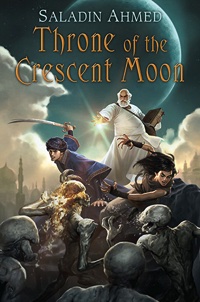 22. Throne of the Crescent Moon by Saladin Ahmed (2012)
22. Throne of the Crescent Moon by Saladin Ahmed (2012)
That epic fantasy favors Euro-centric influences is an understatement the size of the Tolkein family estate; enter Saladin Ahmed’s Throne of the Crescent Moon to deliver a master class in sourcing your fantasy from historical periods other than medieval Europe. Drawing heavily from Middle Eastern mythology, Throne of the Crescent Moon follows Doctor Adoulla Makhslood, a paunchy, past-his-prime ghul hunter drawn away from his impending retirement by a wicked plot brewing in the royal palace. Ahmed, who has found success writing for Marvel Comics and BOOM! Studios, surrounds the Doctor with a varied cast, including a resourceful older married couple, a shape-shifting tribeswoman with nothing to lose and an honor-bound Dervish warrior. Sadly, Ahmed’s attention seems to have shifted fully to comics for the time being, and the proposed second two books in the The Crescent Moon Kingdoms series haven’t materialized in the six years since Throne of the Crescent Moon hit shelves. Since this Locus Award-winning first volume does stand alone, the lack of sequels doesn’t mar our hearty recommendation. —Steve Foxe
![]()
 21. Coraline by Neil Gaiman (2002)
21. Coraline by Neil Gaiman (2002)
You’ve got to hand it to Neil Gaiman: he excels when it comes to assembling an enticing fantasy/adventure lark that turns dark. This modern day Alice In Wonderland starts out quite charming, with the precocious Coraline Jones and her parents moving into a mansion full of quirky flat-mates and a talking cat. But the stakes rise when a monstrous entity masquerading as Coraline’s mother kidnaps the girl’s real parents, leaving Coraline to rely on the assistance of eerie allies in the ghosts of children ensnared by the spell of “Other-Mother.” The grotesquery levels peak particularly high on the scare-o-meter for horror fans when Coraline has to figure out (and eventually fight) her way to conquering this intensely fearsome foe. —Jeff Milo
![]()
 20. The Way of Shadows by Brent Weeks (2008)
20. The Way of Shadows by Brent Weeks (2008)
The orphan struggling for survival in the poorest slum of the poorest city may be something of a fantasy trope, but there are few characters quite like Azoth, pulled out of his misery by the city’s greatest assassin Durzo Blint. There’s very little that’s black-and-white in Brent Weeks’ seedy underworld of the Night Angel trilogy with its killer-with-hearts-of-low-karat-gold protagonists, conniving sympathetic prostitutes and brutal young gangsters. And somehow all three books were published between October and December of 2008—just a little factoid to depress fans of Patrick Rothfuss and George R.R. Martin. —Josh Jackson
![]()
 19. A Corner of White by Jaclyn Moriarty (2013)
19. A Corner of White by Jaclyn Moriarty (2013)
It’s difficult to describe Jaclyn Moriarty’s Colors of Madeline trilogy, which begins with 2013’s A Corner of White and features both a magical parallel universe in which colored winds can soothe or terrorize whole cities and a homeschool history report on Isaac Newton as a pivotal plot point. It’s kind of a fantasy, except that Madeline’s non-magical Earth-world is shaped by television game shows and crushes between schoolmates, and Elliot’s magical Cello-world has computers and cars and high-school ballgames. It’s kind of a portal story, except the portal is only as big as a mail slot. It is kind of an epistolary story, except most of the story is written in prose. It’s kind of a quest novel, except most of the characters necessary to the quest don’t know the rest exist. It’s kind of, fantastically, everything, none of which you will expect, all of which you will love. —Alexis Gunderson
![]()
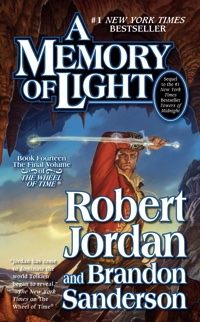 18. A Memory of Light by Robert Jordan and Brandon Sanderson (2013)
18. A Memory of Light by Robert Jordan and Brandon Sanderson (2013)
Robert Jordan’s sprawling, beloved 14-book Wheel of Time series could have, at times, used a more merciless editor. But if it drags in the middle, it finishes strong, thanks to an assist from Brandon Sanderson, who took over the series following Jordan’s untimely death in 2007 at the age of 58. A Memory of Light gave us a satisfying ending to the epic high fantasy saga. Our heroes from the quiet village of Two Rivers and their motley cast of allies all get their moments to shine. Jordan’s complex mythologies, prophesies, histories, battles and systems of magic thread together tightly in the monumental final entry. —Josh Jackson
![]()
 17. Trickster’s Queen by Tamora Pierce (2004)
17. Trickster’s Queen by Tamora Pierce (2004)
Tamora Pierce has been building out her fantastic world of Tortall for over 30 years (Alanna of Trebond, later to become the Lioness, first leapt onto our shelves in 1983), but it wasn’t until the anti-slavery, anti-colonialism Daughter of the Lioness duology appeared in 2003 (Trickster’s Choice) and 2004 (Trickster’s Queen) that Pierce started deeply interrogating the real and complex injustices that arise in a world whose political realities require knights and heroes and magical quests in the first place. Following Alanna’s teenage daughter, Aly, as a rebellious mission to prove her spy mettle results in her being captured and enslaved alongside native raka in the luarin-colonized Copper Isles—which in turn results in the Trickster god, Kyprioth, contracting her to keep two sisters of the raka royal bloodline safe from scheming luarin machinations in anticipation of a full raka rebellion—Trickster’s Choice and Trickster’s Queen are satisfyingly complex, surprisingly romantic, and compellingly progressive. Plus, while they are full of Pierce’s signature Tortallian magic, they are eminently enjoyable on their own, even for readers completely unfamiliar with Tortall and Alanna the Lioness. —Alexis Gunderson
![]()
 16. Who Fears Death by Nnedi Okorafor (2010)
16. Who Fears Death by Nnedi Okorafor (2010)
Who Fears Death is, in short, stunning. Set in a post-nuclear-holocaust Africa, the novel follows a child of rape destined to become a powerful sorcerer. Nnedi Okorafor utilizes her gorgeous prose to dissect topics many shy away from—sexual violence, genocide, war, religion—resulting in a mesmerizing saga that chronicles one woman’s extraordinary life. Trust us, Who Fears Death is necessary reading for the fantasy canon. —Frannie Jackson
![]()
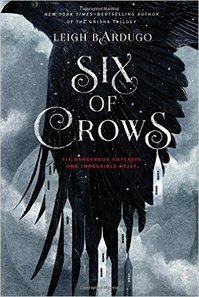 15. Six of Crows by Leigh Bardugo (2015)
15. Six of Crows by Leigh Bardugo (2015)
Set two years after the end of Leigh Bardugo’s Grisha Trilogy, Six of Crows is impossible to put down, boasting an inspiring fantasy world that’s easy to get lost in. The novel takes you back to her fantasy realm of Ketterdam, featuring a ragtag crew of outcasts who must pull off a major heist. The result is a fast-paced story that will keep you turning the (beautifully designed) pages for hours. And if you haven’t read Bardugo’s original trilogy, don’t worry! Six of Crows stands on its own. —Eric Smith
![]()
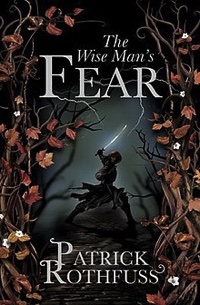 14. The Wise Man’s Fear by Patrick Rothfuss (2011)
14. The Wise Man’s Fear by Patrick Rothfuss (2011)
Book Two in what we all hope will eventually be a trilogy, The Wise Man’s Fear continues Kvothe’s tale of how he went from orphaned musician to feared magician to king-killer to humble innkeeper. After defending a charge of Consortation with Demonic Powers, he takes a break from his studies at the University, and his adventures include a trip to the land of the Fae, where he’s been seduced by the nymph-like Felurian. It may not be quite the masterpiece (which you’ll find below), but it’s still one of the great books of fantasy literature and more than enough to have fans scouring for every hint of a publish date for Book Three. —Josh Jackson
![]()
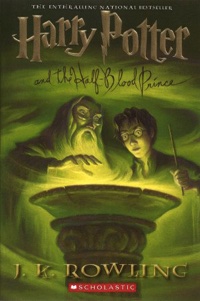 13. Harry Potter and the Half-Blood Prince by J.K. Rowling (2005)
13. Harry Potter and the Half-Blood Prince by J.K. Rowling (2005)
In the 2000s, the Harry Potter novels became the rare series read by fantasy fans and non-fantasy fans, book lovers and non-book lovers, basically everyone on planet Earth. Harry, Hermione and Ron captured our collective hearts even as they bickered and lost trust in each other. In Harry Potter and the Half-Blood Prince, the coming-of-age story mined all the difficulties of adolescence from young love to overconfidence in one’s own widsom to seeing the world in unblinking black and white. Harry comes to believe his dual nemeses at Hogwarts—Draco Malfoy and Severus Snape—are in direct league with Lord Voldemort, something he gets only partly right. Snape has finally won the job he’s coveted all these years—Defence Against the Dark Arts professor—and Malfoy brags about a mission that the Dark Lord has entrusted to him. Meanwhile, Harry relies on a mysterious former student’s notes in his Potions book, and Ron’s jealousy leads him into his first meaningless romance, putting a wedge between himself and Hermione. The books grew up along with their characters and their readers, raising the stakes and emotions in the best-selling book series in history. —Josh Jackson
![]()
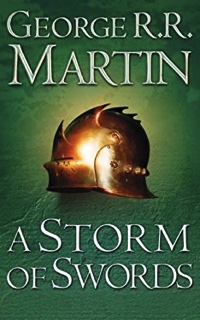 12. A Storm of Swords by George R.R. Martin (2000)
12. A Storm of Swords by George R.R. Martin (2000)
No author does Machiavellian political intrigue quite like George R.R. Martin. In the third entry of the Song of Ice and Fire series made famous by HBO’s Game of Thrones, the brutality of Westeros reaches new heights. This is the novel that contains The Red Wedding, the imprisonment of Davos Seaworth and Tyrion, and mutiny against the Commander of the Night’s Watch. But if Martin can be accused of a lack of empathy for his protagonists, it’s a trait that only makes the reader love them even more and keeps us all glued to the page. When one of our favorite characters dies, we fear for the next one. And one thing these books aren’t lacking for is intriguing characters. Jon Snow, Arya Stark, Tyrion Lannister, Daenerys Targaryen: These names will remain iconic figures in fantasy literature long after many books on this list go out of print. —Josh Jackson
![]()
 11. The Night Circus by Erin Morgenstern (2011)
11. The Night Circus by Erin Morgenstern (2011)
A Romeo & Juliet-esque love story between two powerful young magicians that can actually do real magic, everything about Morgenstern’s debut novel is stunning. The actual Night Circus is a traveling spectacle, a secret that arrives each year, and in this year’s traveling troupe, these two smitten magic-wielders are unknowing pitted against one another, their very lives at stake. For the people they’ve studied with and trusted all these years, are using them a pieces in a game. With several narratives weaving in and out of the magical romance, Morgenstern expertly weaves a beautiful tapestry of a novel, that soars as high as the tents in the fictional circus. The Night Circus is a place, and a book, you’ll want to visit over and over. —Eric Smith
![]()
 10. The City of Brass by S.A. Chakraborty (2017)
10. The City of Brass by S.A. Chakraborty (2017)
A newer book on the list, The City of Brass published at the end of 2017, and is the first book in Chakraborty’s Daevabad trilogy. But it’s already earned a spot as one of the most memorable, and best, fantasy novels we’ve ever read. Set in the 18th century, readers meet Nahri, a skilled con woman who swindles her way through life… until she makes a mistake of magical consequences. She summons a djinn warrior, and finds herself thrown into the magical, mythical world she never believed existed. And at the heart of that world, is the City of Brass, a place called Daevabad. It’s here that she’s caught up in the brewing tensions between tribes of djinn, and her awesome adventure takes off. With lush world building and prose that is impossible to turn away from, it’s a refreshingly original take on a fantasy world that pulls from the largely untapped world of Islamic folklore. —Eric Smith
![]()
 9. Cloud Atlas by David Mitchell (2004)
9. Cloud Atlas by David Mitchell (2004)
David Mitchell’s Cloud Atlas is a formal masterpiece, a book whose structure is an essential part of its story. That’s not an easy stunt to pull off without seeming like a showoff or dragging readers out of the narrative to examine the plumbing or being just plain alienating, but he does it beautifully. A sort of mirror-plated Chinese box, the story’s structure is inspired by Italo Calvino’s If on a winter’s night a traveler, containing several interrupted narratives in a nested sequence, with each connected to the next by a single character from the previous one. A 19th century American lawyer meets Maori people and missionaries in England; a young British composer in the 1930s talks a dying luminary into making him his amanuensis; the young composer’s lover ends up a nuclear scientist in the Reagan ’70s in California; a journalist with a bullseye on her back; a vanity publisher; a slave from a future world; a tribesman in a post-apocalypric Hawai’i. Multi-POV narratives can be challenging to sustain even when all the characters are in the same story—doing it with six separate, barely-connected narratives is almost a magic trick. Mitchell’s novel is a structural tour de force and possibly one of the most intriguing books of the 21st century (so far). —Amy Glynn
![]()
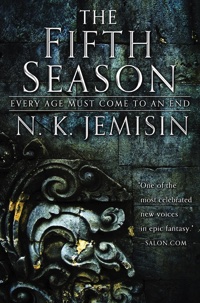 8. The Fifth Season by N.K. Jemisin (2015)
8. The Fifth Season by N.K. Jemisin (2015)
The first book in N.K. Jemisin’s Broken Earth Trilogy introduces a stunning world in the midst of an apocalyptic event. To avoid major spoilers, let’s just say that the Hugo Award-winning novel is brimming with gloriously intense family drama and includes one of the most phenomenal magic systems ever created. The Fifth Season also boasts a complex protagonist who is a mother, gifting us with one of the most formidable and fascinating characters of the 21st century. —Frannie Jackson
![]()
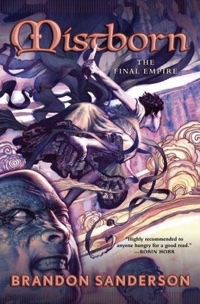 7. Mistborn: The Final Empire by Brandon Sanderson (2006)
7. Mistborn: The Final Empire by Brandon Sanderson (2006)
In exploring a shocking question—What happens if the hero fails and the villain reigns?—Brandon Sanderson kicks off a thrilling fantasy saga with Mistborn: The Final Empire. It boasts all of the best fantasy elements: a unique magic system, a ragtag group of rebels led by a charismatic rogue, an orphan with mysterious powers. But Sanderson weaves those predictable elements into a breathtaking saga that promises twists every step of the way. Mistborn succeeds in celebrating what makes fantasy magical while simultaneously delivering a fresh adventure that’s endlessly entertaining. —Frannie Jackson
![]()
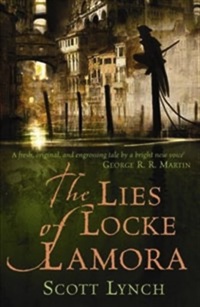 6. The Lies of Lock Lamora by Scott Lynch (2006)
6. The Lies of Lock Lamora by Scott Lynch (2006)
This is not the only tale of young orphan escaping a world of abject poverty on this list, but it’s the one that takes the most joy in the scheming thievery that makes his escape possible. Lock Lamora is a precociously gifted pick-pocket and con artist before he’s tall enough to reach the hips of most adults, but his skills are perfected once he apprentices with Father Chains, becoming an official priest of the Crooked Warden and one of the Gentleman Bastards whose motto is: “Richer and cleverer than everyone else.” The Lies of Locke Lamora gets its inspiration as much from heist stories as it does from the worlds of epic fantasy. Locke and his crew must rely on their wits, disguises, acting, sleights of hand and good ol’ fashioned muscle as they go up against an actual magician. Locke Lamora—the Thorn of Camorr—takes his place among fiction’s most lovable rogues and gentleman thieves, alongside Robin Hood, Thomas Crown, Danny Ocean and Moist von Lipwig. —Josh Jackson
![]()
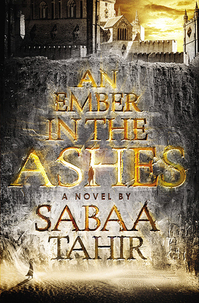 5. An Ember in the Ashes by Sabaa Tahir (2015)
5. An Ember in the Ashes by Sabaa Tahir (2015)
Set in a world resembling ancient Rome, An Ember in the Ashes is an epic fantasy novel of love and revenge. When a young soldier groomed to take over the oppressive, military government decides to turn his back on the regime, he collides with a young scholar determined to save her brother. He’s a soldier, she’s a slave, and together they prepare to discover their freedom. It’s a hefty book, but you’ll devour this electrifying tome in no time. The story continues in A Torch Against the Night. —Eric Smith
![]()
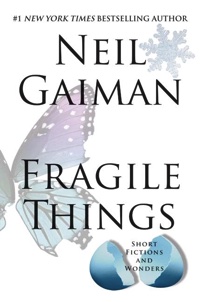 4. Fragile Things by Neil Gaiman (2006)
4. Fragile Things by Neil Gaiman (2006)
It’s borderline frustrating that Neil Gaiman has yet to meet a storytelling medium that he can’t master, and so it’s no mistake that Fragile Things, his 2006 collection, is subtitled Short Fiction and Wonders. From a gothic send-up (“Forbidden Brides of the Faceless Slaves in the Secret House of the Night of Dread Desire”) to a Lovecraftian Sherlock Holmes tale (“A Study in Emerald”), a humorous poem later adapted into a series of t-shirts (“The Day the Saucers Came”) to an American Gods novella (The Monarch of the Glen), Fragile Things spans the breadth of what constitutes fantastic fiction, and each and every one is a “wonder” indeed. Aside from the previously mentioned Lovecraft/Holmes mashup, though, Fragile Things is probably best known for “How to Talk to Girls at Parties,” a melancholy Hugo Award-nominated science-fiction story that perfectly captures the alien experience of being a teenager. —Steve Foxe
![]()
 3. Harry Potter and the Deathly Hallows by J.K. Rowling (2007)
3. Harry Potter and the Deathly Hallows by J.K. Rowling (2007)
The culmination of the Harry Potter series was, it has to be said, pretty overweight—a competent copy editor could’ve removed a hundred pages from the manuscript without doing a thing other than deleting repetitive lines and phrases. But the voracious readers of the series would’ve forgiven a lot more than imperfect prose styling: We were dying to see Harry’s search for the Horcruxes and his final showdown against Lord Voldemort. And we got that plus a lot more: In the conclusion to the seven-book series J.K. Rowling not only continues to evoke the magically vivid secret world of Wizards living unnoticed under the noses of the non-magical, but she also does some of her best character development work as Harry is forced to confront his own death, his relationships with loss, with power, with bereavement, with knowledge gotten too late, with questions that didn’t get asked, and with love. It largely dispenses with the good-versus-evil paradigm that characterized the earlier books; as Harry has grown up, he’s learned that no one is truly 100% one or the other (though Voldemort’s still pretty close). An archetypal, alchemy-suffused coming-of-age tale set in a highly clever and lavishly realized alternate world, Harry Potter and the Deathly Hallows is the kind of book you read over and over, simply because the culmination is so satisfying. A flawed piece of prose but a wonderful finale to a thoroughly marvelous concept. —Amy Glynn
![]()
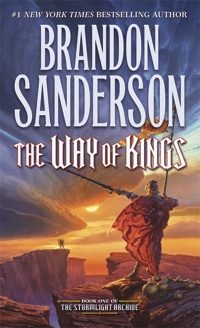 2. The Way of Kings by Brandon Sanderson (2010)
2. The Way of Kings by Brandon Sanderson (2010)
Brandon Sanderson is a master of many aspects of the fantasy genre: epic world-building, coherent systems of magic and unforgettable character development. All those are in peak form in his masterwork, The Way of Kings, the first of his three-book-long-and-counting series The Stormlight Archive. Roshar is a world where magic is rare, but spren—the spirits of just about every object or idea—are common. A few magic items like soulcasters, shard blades and shard plates are remnants of a grander age. In nations like Alethkar and Jah Keved, light eyes are revered, while those with dark eyes remain a lower caste. The Way of Kings is told from the points-of-view of four loosely connected characters, but the main focus is on Kaladin, a darkeyed soldier betrayed by his light-eyed commander and sold into slavery. With every shred of humanity and defiance beaten out of him, his final indignity is getting forced to carry bridges to the frontlines of an endless war—a death sentence. But his fellow crewman of Bridge Four find brotherhood and redemption in the most hopeless of places. The other two books of the Stormlight Archive are fantastic, but nothing compares to Kaladin’s original heroic journey in The Way of Kings. —Josh Jackson
![]()
 1. The Name of the Wind by Patrick Rothfuss (2007)
1. The Name of the Wind by Patrick Rothfuss (2007)
Kvothe’s tale, reluctantly told by the old innkeeper himself, is as gripping, emotional and imaginative as any fantasy story put to paper. Born into a family of traveling musicians, Kvothe’s world is upended when the mythical Chandrian murder his family. He becomes a directionless pickpocket and thief before learning more about his parents’ killers and resolving that the ultimate answers can only be found by attending the University. His years there are filled with young love, rivalry with wealthier classmates and music. Kvothe the narrator is a world-renowned magician, musician and sword-fighter, but his autobiography is a coming-of-age story with full of hardship and drama. And Patrick Rothfuss is the kind of writer that transcends genre qualifiers. The prose is masterful with rich characterization exhilarating storytelling. Not a word feels out of place. This is the kind of book you recommend to anyone, whether or not they think they like fantasy. And then they can join you in waiting impatiently for the third installment in the Kingkiller Chronicle following 2011’s The Wise Man’s Fear. —Josh Jackson